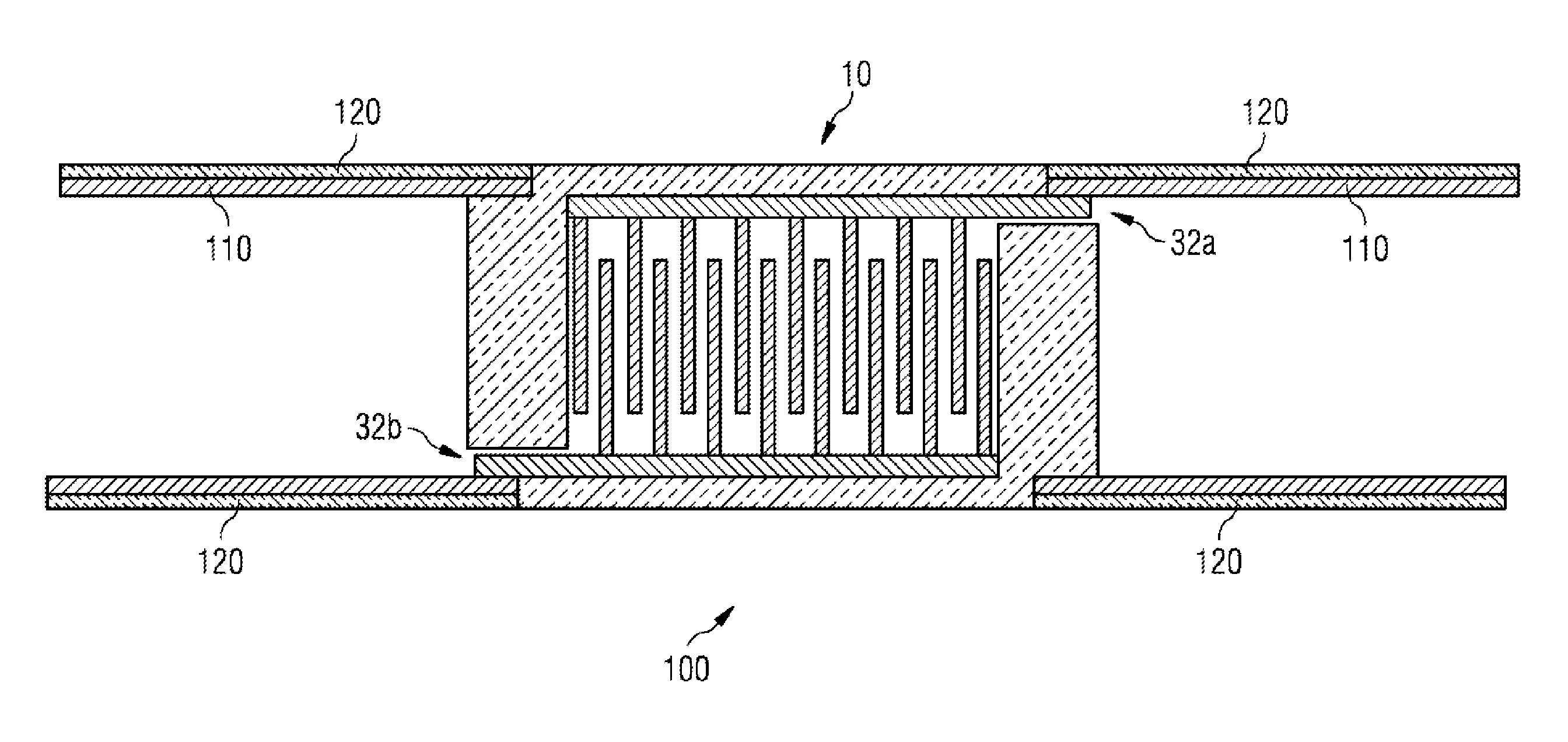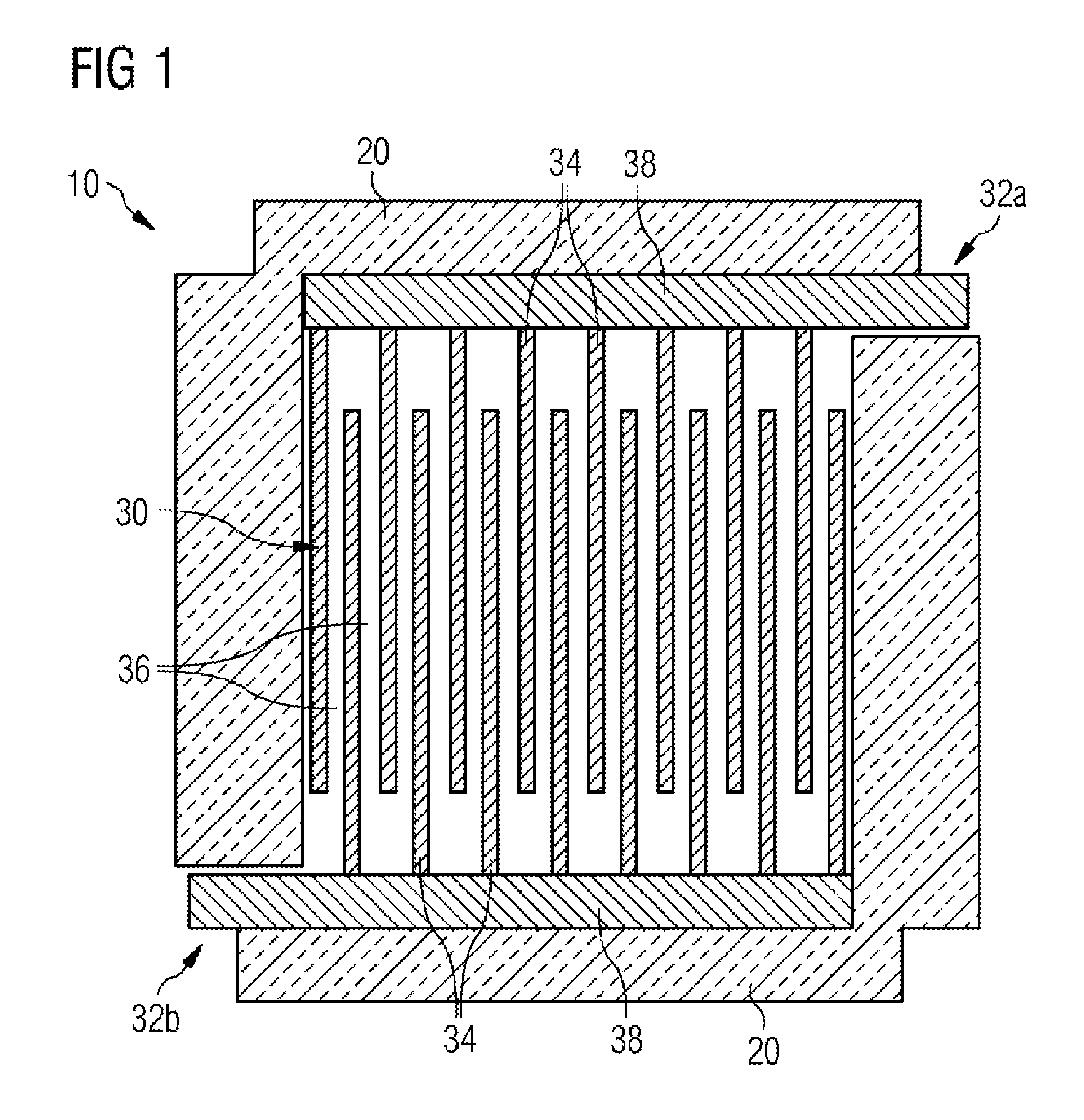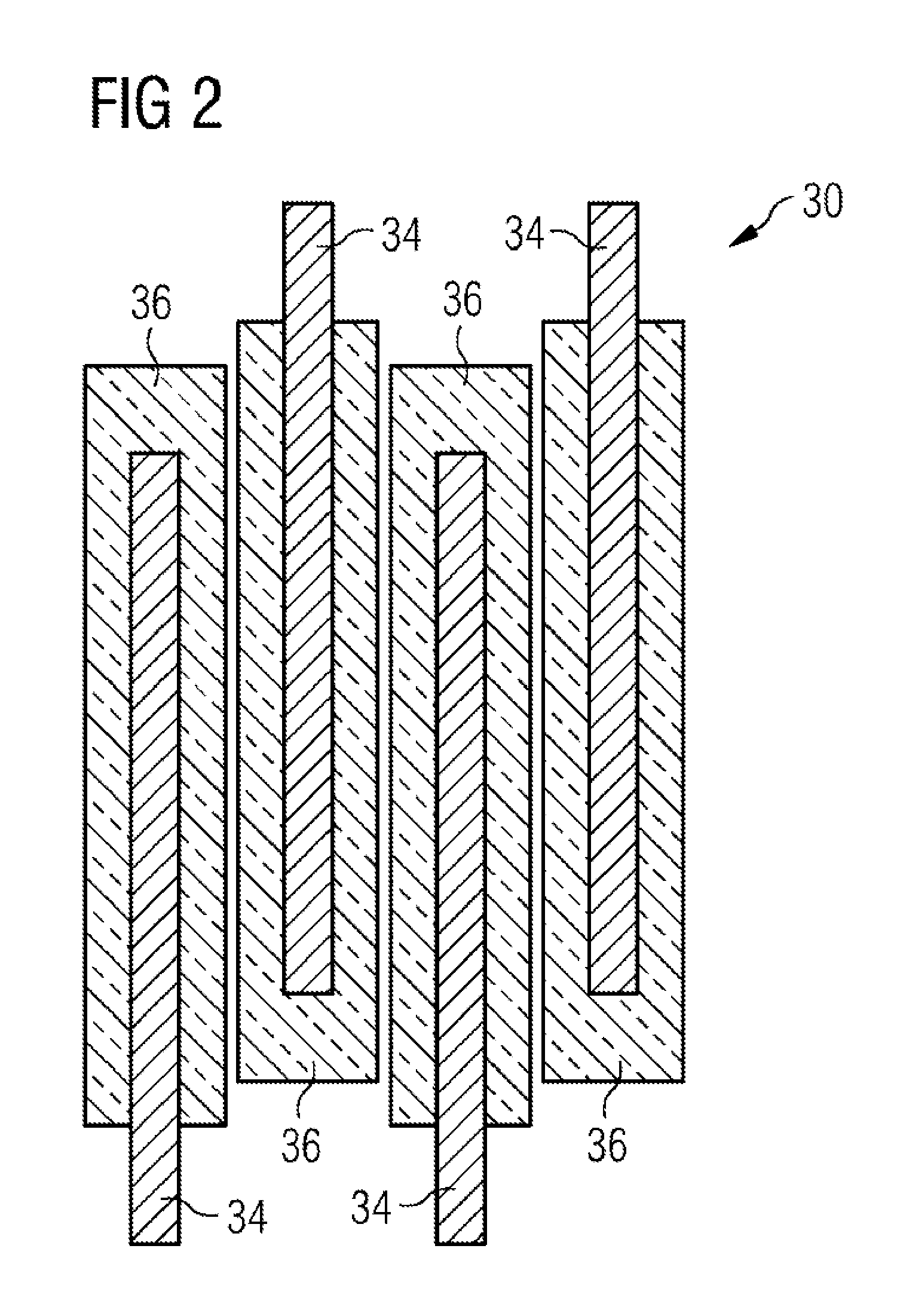Capacitor device for a conductor loop in a device for the in-sity production of heavy oil and bitumen from oil-sand deposits
a technology of conductor loop and capacitor, which is applied in the direction of capacitor manufacturing, insulation, borehole/well accessories, etc., can solve the problems of relatively high voltage drop, high degree of complexity in respect of pressure loss occurring during introduction of gases/vapors, and complex manner, so as to achieve flexibility or capacity for tensile loading and increase thermal resistance. , the effect of increasing the mechanical stability
- Summary
- Abstract
- Description
- Claims
- Application Information
AI Technical Summary
Benefits of technology
Problems solved by technology
Method used
Image
Examples
Embodiment Construction
[0055]Elements having the same function and mode of operation have been provided in each case with the same reference symbols in FIGS. 1 to 8.
[0056]FIG. 1 depicts a first embodiment of a capacitor device 10. The capacitor device is provided with a housing 20, which may have an electrically insulating effect. A capacitor unit 30 is arranged in the interior of this housing 20. The capacitor unit has a multiplicity of opposite capacitor plates 34, where each plate may be referred to as a capacitor plate stack. The capacitor plates 34 are all carried by a plate carrier 38. The respective plate carrier 38 at the same time forms, at least partially, the connection interfaces 32a and 32b. Mechanical and electrically conductive contact is made with line elements 110 connected there later at these connection interfaces 32a and 32b.
[0057]The assembled variant is depicted, for example, in FIG. 3. In FIG. 3, a line element 110 is attached to the respective connection interface 32a and 32b in t...
PUM
| Property | Measurement | Unit |
|---|---|---|
| frequency | aaaaa | aaaaa |
| thickness | aaaaa | aaaaa |
| thickness | aaaaa | aaaaa |
Abstract
Description
Claims
Application Information
 Login to View More
Login to View More - R&D
- Intellectual Property
- Life Sciences
- Materials
- Tech Scout
- Unparalleled Data Quality
- Higher Quality Content
- 60% Fewer Hallucinations
Browse by: Latest US Patents, China's latest patents, Technical Efficacy Thesaurus, Application Domain, Technology Topic, Popular Technical Reports.
© 2025 PatSnap. All rights reserved.Legal|Privacy policy|Modern Slavery Act Transparency Statement|Sitemap|About US| Contact US: help@patsnap.com



